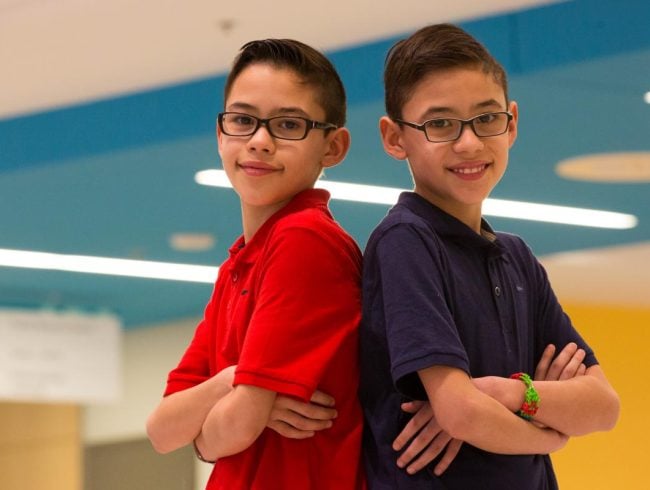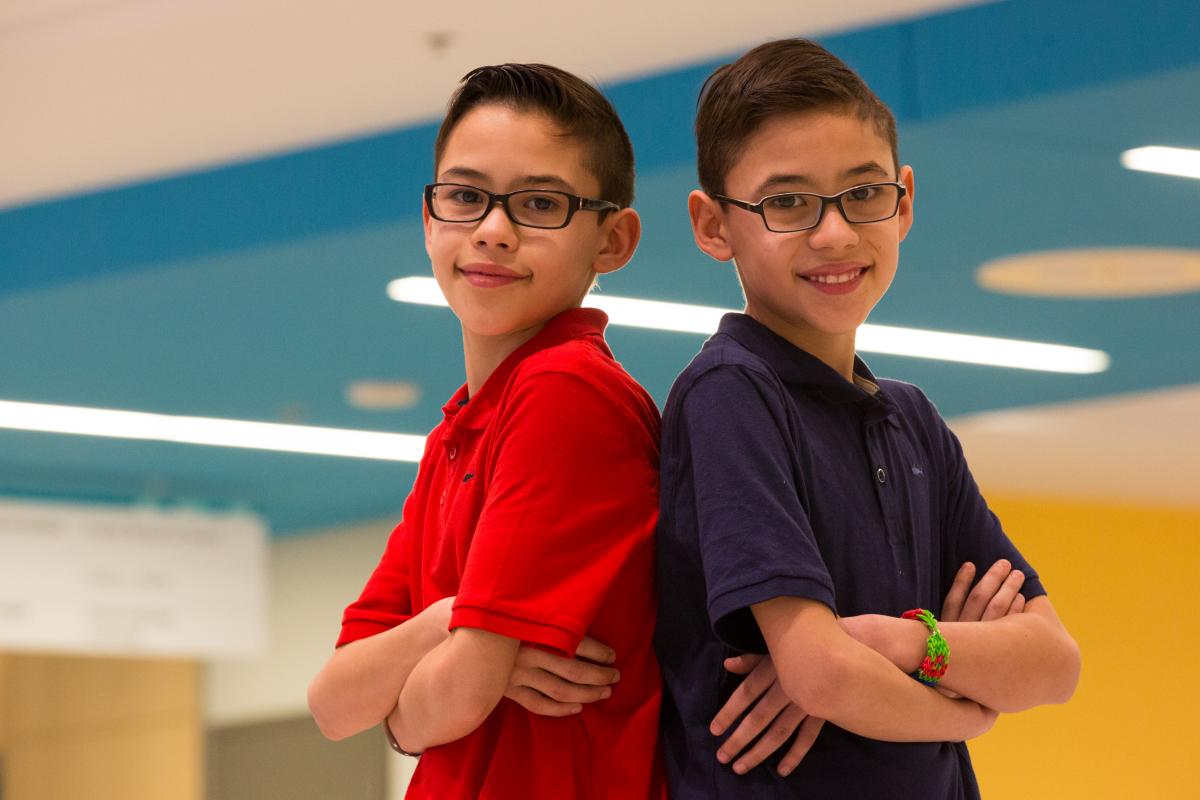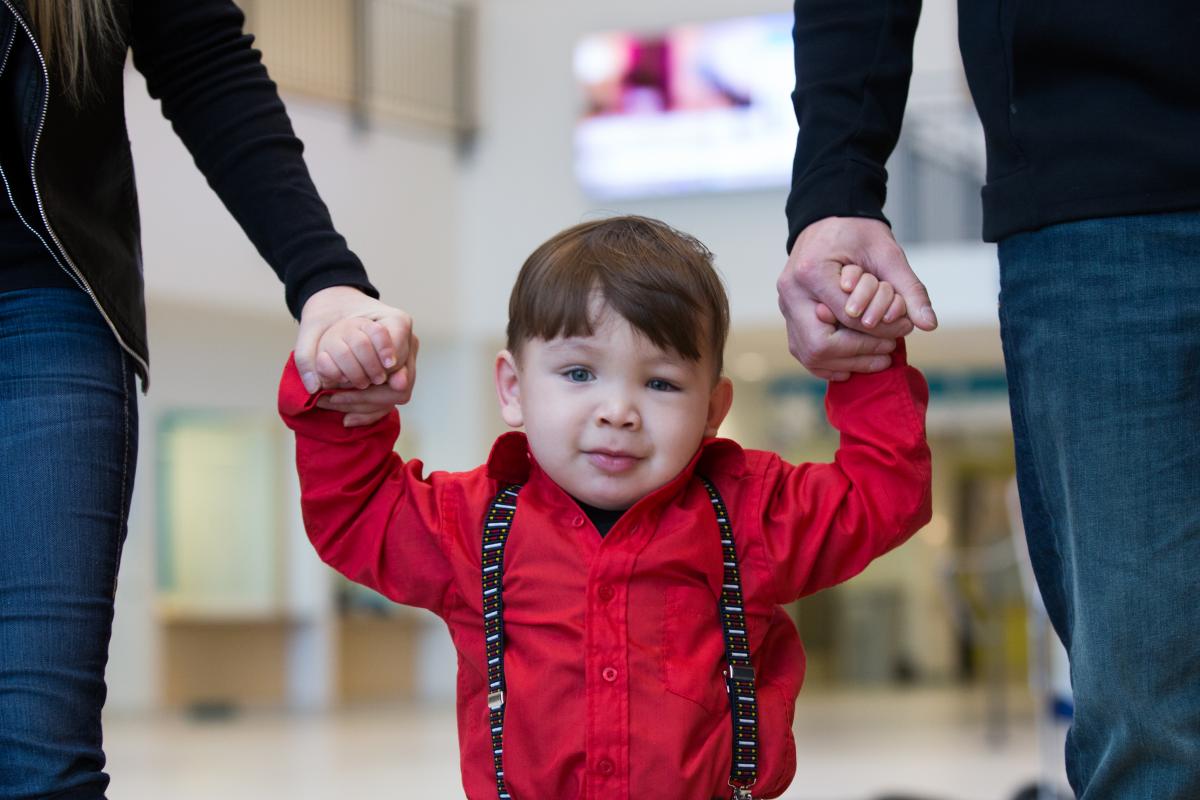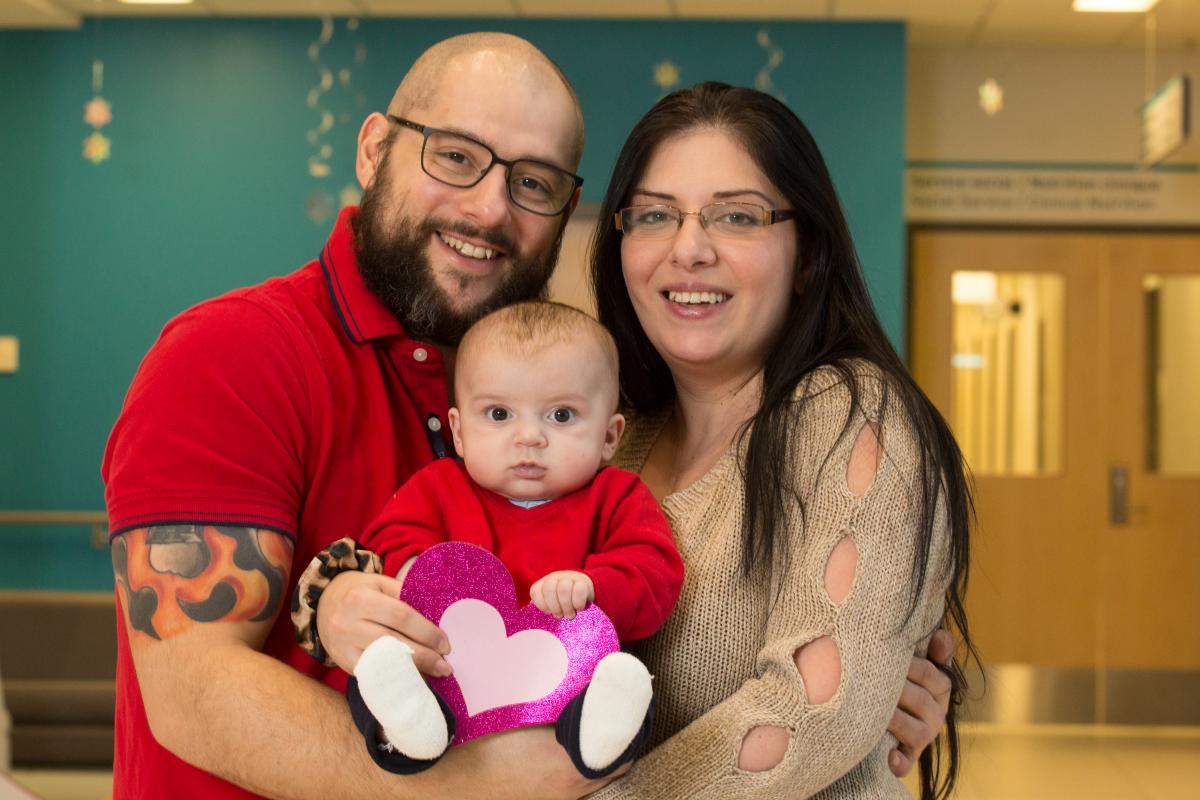
A rare respiratory disease may be more prevalent in Quebec
27 November 2025
Rise in respiratory infections and measles outbreak: important infection prevention measures at the Montreal Children’s Hospital.
Read moreWelcome to the Montreal Children's Hospital

9 February 2017

Cesar, 12, atrial septal defect
Cesar and his twin brother, Andres share a lot in common: they both love video games, playing soccer and cheering for their favourite European teams (Cesar loves Barcelona, and Andres is a Real Madrid fan). But during a routine visit to the doctor’s office a heart murmur was heard originating from Cesar’s heartHe was referred to pediatric cardiologist, Dr. Adrian Dancea, forfurther investigation. , The family was told that Cesar had not one, but two holes in his heart.
“As soon as I heard it was a heart condition, I was worried,”says Nelsy, Cesar’s mother. “But Dr. Dancea really took the time to explain everything clearly to me, and I felt a lot calmer.” Cesar had to undergo a cardiac catheterization to close the holes. The procedure was done this past fall. “They placed a long thin tube called a catheter through my vessels and to my heart,” he says. Using a prosthetic device , the team was able to almost completely block the holes explains Nelsy. Dr. Dancea assured the family that Cesar could expect to live a completely normal life thanks to the intervention. “We are very grateful for the Montreal Children’s Hospital, Dr. Dancea and his team,” says Nelsy.

Carmelo, 2, congenital pulmonary lymphangiectasia
Before Carmelo was born, Sheryll and Brad had never heard of lymphangiectasia. But during a routine ultrasound during Sheryll’s pregnancy, doctors were concerned about a greater amount of fluid around Carmelo’s little heart. “That’s when we were referred to the Cardiology department at the Children’s for further evaluation,” Sheryll explains. Dr. Adrian Dancea, pediatric cardiologist, met with the family to explain their son’s diagnosis: congenital pulmonary lymphangiectasia. “Everyone has fluid called lymph in their bodies, and Carmelo just produces more than everyone else,” explains Sheryll. In fact, there was so much fluid around his heart that Carmelo recently had to undergo a procedure called cardiocentesis: where doctors had to drain the fluid from around the heart with a needle. “He was hospitalized for 3 or 4 days, but unfortunately the fluid came back,” says Sheryll. “In December, Dr. Pierre-Luc Bernier performed pericardial window surgery on him: creating a small window so that fluid from around Carmelo’s heart could be drained into his lung cavity. He bounced right back and recovered quickly. Even when he was sick, he never showed it. He continues to be very energetic, loves hockey and all sports. He’s wild about it all!”

Léa, 12 , narrowing of the aorta
Claudia and her husband, François remember the day they were transferred to the Children’s like it was yesterday. Their daughter Léa, then just a day old, was breathing very rapidly. Dr. Luc Jutras, pediatric cardiologist, explained that their daughter’s aorta was blocked and that she would needed an aortic transplant. At just 8 days old, Léa underwent surgery with Dr. Christo Tchervenkov to replace part of her aorta using a chemically treated aortic transplant from a cadaver.
“We knew from early on that Léa would need follow-up surgeries to further correct her aortic narrowing,” says Claudia. “She had another surgery this past August, using a synthetic aortic tissue. Léa was quite nervous for the surgery, but with help from Sabrina from Child Life Services, she was reassured and the experience was a lot less scary.”
In fact, Léa had such a positive experience that she and her parents created a special scrapbook about what to expect during heart surgery: a book they have shared with many members of the Cardiology and Cardiac Surgery Departments to help other families. She also presented the book to her classmates recently to explain what it’s like to be followed for a heart condition. “It was only supposed to be a 10 minute presentation, but my classmates had so many questions that it lasted an hour and a half!” she laughs.

Ferro, 4 months, hypoplastic right heart syndrome
First-time parents Vincenzo and Hratchouhi were looking forward to their 5-month ultrasound to confirm the gender of their baby. But in looking at the images, doctors noticed something concerning. “The right ventricle of Ferro’s heart was missing,” says Vincenzo. “We were referred to the Cardiology Department at the Children’s, and they explained that he had hypoplastic right heart syndrome: basically, the oxygenated blood doesn’t flood into his heart like it should. This meant he would need open heart surgery as soon as he was born.”
What seemed like a dire situation at first suddenly seemed more manageable, says Vincenzo, due to the Cardiology team’s optimism. “We got smiles and support as soon as we met them,” he says. “Suddenly we felt like we didn’t have anything to worry about.” At just 6 days old, Ferro underwent a 5-hour open heart surgery with pediatric cardiac surgeon, Dr. Christo Tchervenkov to install a shunt that would allow oxygenated blood to flow to his lungs. Though he will need another surgery in a few months and another between the ages of 2 and 4, Vincenzo and Hratchouhi happily report that Ferro continues to thrive despite the challenges he’s faced in his young life. “By looking at him today, you’d never know he had anything!”